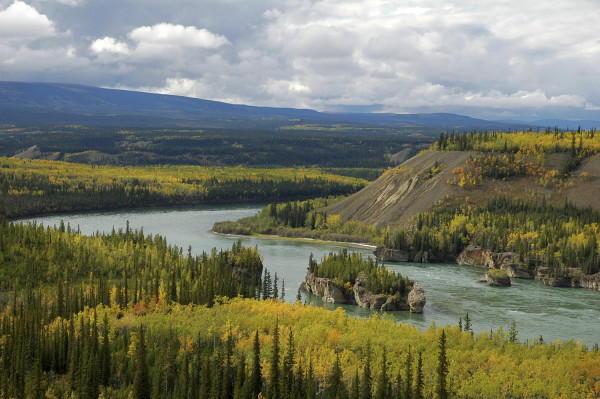Why the Yukon River is so valuable (and it has nothing to do with gold)
The Yukon Watershed is the latest watershed assessed by WWF-Canada as part of a series of reports of the health of, and threats to, Canada’s waters. WWF worked with scientific advisors across the country, and will have a complete picture of the state of Canada’s watersheds by 2017.
Made famous by the Klondike gold rush of the late 1800s, the mighty Yukon River provides much more value to communities today than a few shiny nuggets. At 3,185 kilometres, it’s the third longest river in North America. It begins its journey in British Columbia, then flows northwest through the Yukon and Alaska to eventually empty into the Bering Sea.
In addition to the expansive views that dot the river’s passage, the Yukon watershed, which covers an area of roughly the size of all of Italy, is home to an impressive roster of species including trumpeter swans, mink, moose, bears and wolverines.
It’s also home to one of the world’s longest salmon runs. Every year, thousands of salmon migrate through the river. Younger salmon swim downstream to start their life in the ocean; mature salmon return upstream to spawn at the end of their lifecycle.
But it’s not just the fish — and the bears and whales that need them to survive — that benefit from this life-giving waterway: Humans have been connected to the Yukon River for several millennia. America’s earliest settlers are believed to have passed through the Yukon watershed over 10,000 years ago. More recently, the Yukon River played a big part in the Klondike Gold Rush by providing a navigation route for prospectors.
Today, the Yukon River is still tightly woven into the social and economic fabric of the approximately 30,000 people who live in the watershed. The salmon fishery is an important industry in the region, and many who inhabit the region rely on salmon and other species for subsistence.
WWF-Canada recently released the Yukon River Watershed Report as part of our work to develop by 2017 this national picture of the health of Canada’s 25 major watersheds, including any threats. The report is developed in partnership with the Yukon River Inter-Tribal Watershed Council. The Yukon watershed is assessed as being in good health overall, but climate change and habitat loss are significant threats that could increasingly impact the health of this ecosystem if left unchecked.
WWF’s results show that water quality is a concern in the watershed. For instance, uranium levels exceed federal and provincial guidelines more than half the time in these five sub-watersheds: Headwaters Yukon, Pelly, Upper Yukon, Stewart and Central Yukon. Other substances, such as aluminum, also frequently exceed guidelines.
The Yukon River watershed remains healthy as a whole, despite these issues. It is one of only three watersheds assessed to date by WWF that received an overall health score of “good.”
Through the watershed report, WWF aims to raise awareness about the state of the Yukon watershed and strengthen safeguards to protect these waters, the rich diversity of species, and the communities that rely on them.
To learn more about the WWF-Canada’s national assessment, please visit watershedreports.wwf.ca


